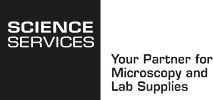The Mounting of Specimens for SEM with the Common Glue Gun
Specimens are usually attached to SEM stubs by means of either sticky tape, adhesives, or melt adhesives.
- Sticky tapes are very convenient and fast; but the bonds formed are not strong or stable. In addition, it is difficult to attach large, bulk, and irregular shaped specimens with tape.
- Adhesives, usually solvent based, can form strong bonds, however, for the satisfactory operation of the coater and the SEM, the solvent must be evaporated completely which can take a considerable amount of time.
- Melt adhesives can set up strong bonds very quickly, however, the procedure for its use is cumbersome.
Mounting with melt adhesives using a common glue gun is quicker and more convenient. Several glue guns were examined and tested. The temperature at the nozzle of conventional glue guns was found to be between 180-195°C which could cause damage to heat-sensitive specimens. However, now there is a so-called low temperature glue gun and adhesive (see New Products, Section III in this N/V)that overcomes this problem. The nozzle temperature measures only at 106°C. The general procedure is very simple: the melt is dispersed from the nozzle directly onto the surface of a stub. While the adhesive is still molten or soft, the specimen is applied to it, forming a strong bond quickly. The specimen can be repositioned by softening the adhesive with the hot nozzle of the glue gun. There is no evidence of any degassing of the melt adhesive in either the sputter coater or the SEM. The glue gun can also be used in mounting granular or powdered specimens. A drop of melt adhesive is deposited and smeared onto the stub. The granular or powdered specimen is adhered to the adhesive by either sprinkling or dipping it.
Reference:
G.W. Bailey, and J.A. Small, Editors, Proc. 50th Annual Meeting of the EMSA/MAS/MSC/SMC. (1992) pg. 410-411.



